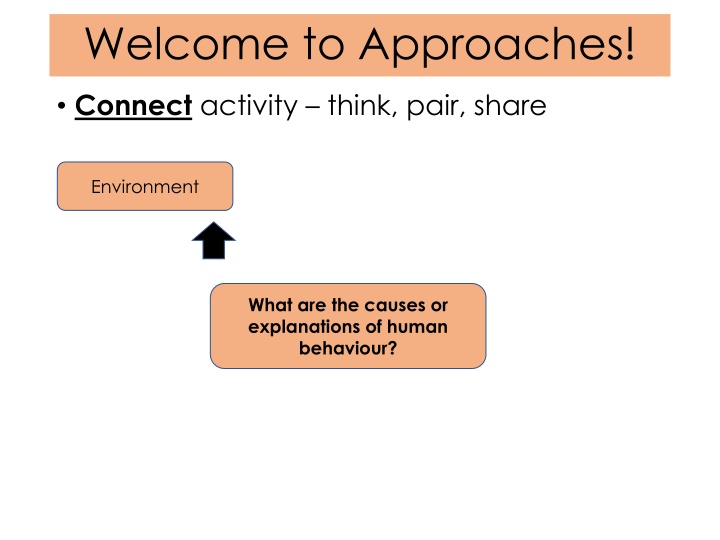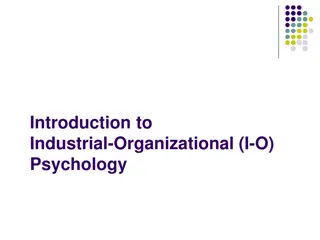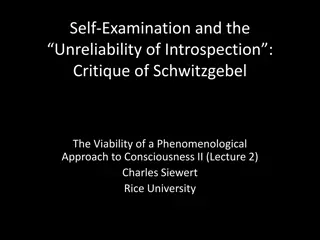
Origins of Human Behavior in Psychology
Explore the origins of human behavior through the study of Wilhelm Wundt's structuralism and introspection in psychology. Learn about different approaches and perspectives in psychology and delve into early influences. Engage in activities to understand the causes and explanations of human behavior.
Download Presentation

Please find below an Image/Link to download the presentation.
The content on the website is provided AS IS for your information and personal use only. It may not be sold, licensed, or shared on other websites without obtaining consent from the author. If you encounter any issues during the download, it is possible that the publisher has removed the file from their server.
You are allowed to download the files provided on this website for personal or commercial use, subject to the condition that they are used lawfully. All files are the property of their respective owners.
The content on the website is provided AS IS for your information and personal use only. It may not be sold, licensed, or shared on other websites without obtaining consent from the author.
E N D
Presentation Transcript
Welcome to Approaches! Connect activity think, pair, share Environment What are the causes or explanations of human behaviour?
Big Picture A01 Knowledge and understanding To describe key early events and influences Psychology. All A02 Application To explain these events/influences with reference to what we know about psychology today. Most A03 Evaluation To discuss the strengths and weaknesses of early influences in Psychology. Some
Activate Approaches (sometimes also called perspectives) = different ways of looking at and explaining psychology phenomena Year 1 (AS/Year 12) Origins Behaviourist Social learning theory Cognitive approach Biopsychology (Approach and separate topic) Year 2 (A2/Year 13) Psychodynamic approach Humanistic approach Comparison of approaches
Activate Origins of Psychology Wilhelm Wundt Introspection Emergence of psychology as a science Evaluation Origin = where something begins Key term alert!
Demonstrate task Task 1) Using the tutor2u link on SMHW find the answers to the questions on Wundt. Task 2) Challenge: Can you think of or identify any strengths or weaknesses of Wundt s approach?
Activate Wilhelm Wundt (1832 1920) Aim was to study the structure of the mind (structuralism) by breaking down behaviours such as perception and sensation Three different methods: Experiments E.g. measurement of the duration of simple mental processes Historical method Study of mental differences between cultures (time = evolution) (space = differences in groups of people)
Activate: Wilhelm Wundt Introspection Latin for looking into Breaking up conscious awareness into basic structures of thoughts, images and sensations Based on belief of having conscious access to parts of mental processes Participants would be presented with a problem to solve or something to memorise. They d then be asked to reflect on their own cognitive processes and describe them
Consolidate Introspection: your turn Task: Write down all your conscious thoughts while you are trying to solve the problem. Do not censor any thoughts. A man has to get a fox, a chicken, and a sack of corn across a river. He has a rowboat, and it can only carry him and one other thing. If the fox and the chicken are left together, the fox will eat the chicken. If the chicken and the corn are left together, the chicken will eat the corn.
Consolidate Solution The man and the chicken cross the river, (the fox and corn are safe together), he leaves the chicken on the other side and goes back across. The man then takes the fox across the river, and since he can't leave the fox and chicken together, he brings the chicken back. Again, since the chicken and corn can't be left together, he leaves the chicken and he takes the corn across and leaves it with the fox. He then returns to pick up the chicken and heads across the river one last time.






















